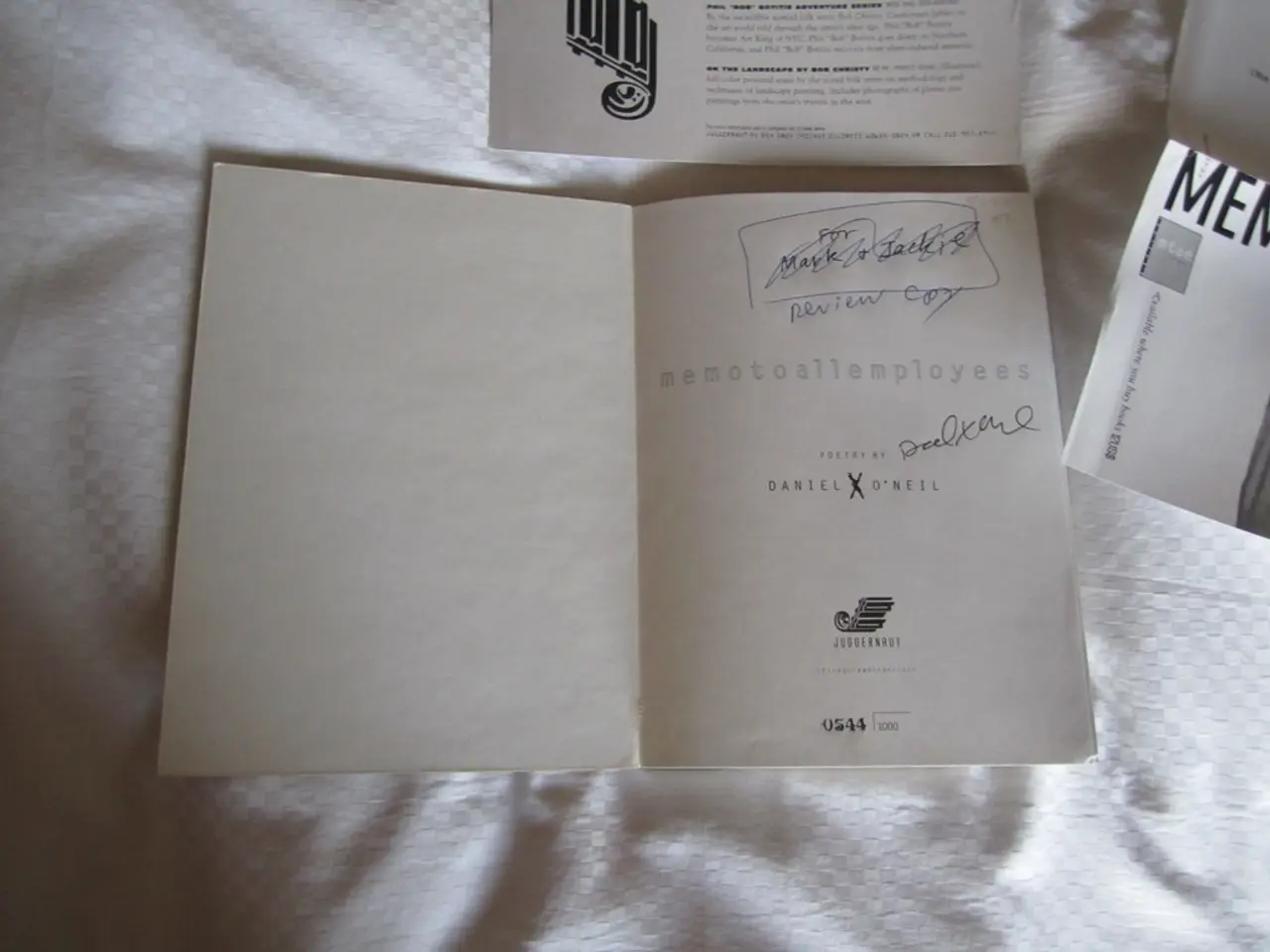Strategies for Securing Patents on Inventions: Tips for Guarding Your Innovations
==============================================================================================
In the dynamic world of innovation, understanding the intricacies of the patenting process is essential for inventors and businesses alike. Here's a guide to navigating the complex patent landscape and devising effective strategies for patent filing.
Filing under the Patent Cooperation Treaty (PCT) offers a strategic advantage for inventors aiming to protect their inventions internationally. By securing an early priority date, inventors can delay major costs associated with multiple national filings and assess the commercial value of their invention across markets. During the international phase, lasting up to 30 or 31 months, an International Searching Authority (ISA) conducts a search and gives an early opinion on patentability [1][3][5].
Conducting a worldwide patent search early in the process helps identify key foreign patents of competitors and uncovers potential challenges or opportunities for filing strategies in specific jurisdictions [1]. Strategically selecting countries for the national phase, where actual patent grants are pursued, helps manage substantial filing fees, translation costs, and attorney fees. The 30-month delay before national phase entry provides crucial time for financial and market evaluation, especially important for startups and small companies facing capital constraints [1][3].
Understanding jurisdiction-specific patentability standards is crucial because claims allowable in one country may be rejected in another. Tailoring patent prosecution to local requirements improves success rates and protection scope [3]. Working with qualified local counsel during national phase filing ensures compliance with formal requirements, manages local fees, and facilitates prosecution to maximize patent strength and enforceability [5].
In addition to these strategies, it's essential to stay informed about patent law changes and industry trends to adjust strategies for patent filing accordingly.
When it comes to patent types, utility patents protect new and useful processes, machines, articles of manufacture, or compositions of matter and last for 20 years from the filing date. Design patents, on the other hand, cover new and original ornamental designs for an article of manufacture and have a shorter protection term of 15 years from issuance [6]. Plant patents apply specifically to new and distinct varieties of plants that have been asexually reproduced.
Preparing a patent application requires meticulous attention to detail, with each component, from descriptions to illustrations, cohesively articulating the invention's uniqueness and practical application. A comprehensive patent application provides a complete understanding of the invention, and claims drafting establishes the legal boundaries of an invention by articulating what the inventor seeks to protect [7]. A detailed description of the invention should articulate the purpose, functionality, and uniqueness of the invention, ensuring clarity for the patent examiner [8].
Navigating the patent process involves a series of structured phases, beginning with the preparation and filing of the patent application, followed by examination, potential objections, and issuance of the patent. Timing your patent filing is crucial, as filing before public disclosure of the invention is essential to securing patent rights [9].
In conclusion, leveraging the PCT system and combining it with strategic searches and expert legal guidance allows inventors to safeguard their innovations internationally while controlling costs and sharpening market advantage. By establishing early priority dates and competitive intelligence, managing filing costs and timelines, maximizing enforceability and market exclusivity, and avoiding premature expenditure and poor decisions, inventors can protect their innovations globally and secure a competitive edge in their respective industries.
[1] World Intellectual Property Organization (WIPO), (2021). PCT Facts and Figures. Retrieved from https://www.wipo.int/pct/en/facts/
[2] European Patent Office (EPO), (2021). International Patent System. Retrieved from https://www.epo.org/patents/about/international/index.html
[3] United States Patent and Trademark Office (USPTO), (2021). Patent Cooperation Treaty (PCT). Retrieved from https://www.uspto.gov/patents/international/pct
[4] United Kingdom Intellectual Property Office (UKIPO), (2021). Patent Cooperation Treaty (PCT). Retrieved from https://www.gov.uk/government/publications/patent-cooperation-treaty-pct/patent-cooperation-treaty-pct
[5] Japanese Patent Office (JPO), (2021). Patent Cooperation Treaty (PCT). Retrieved from https://www.jpo.go.jp/e/pct/index.html
[6] United States Patent and Trademark Office (USPTO), (2021). Types of Patents. Retrieved from https://www.uspto.gov/learning-and-resources/what-patents/types-patents
[7] United States Patent and Trademark Office (USPTO), (2021). Preparing a Patent Application. Retrieved from https://www.uspto.gov/patents/apply/general-information-filing-patent-application
[8] United States Patent and Trademark Office (USPTO), (2021). Writing the Detailed Description. Retrieved from https://www.uspto.gov/patents/apply/general-information-filing-patent-application/writing-detailed-description
[9] United States Patent and Trademark Office (USPTO), (2021). Timing Your Patent Filing. Retrieved from https://www.uspto.gov/patents/apply/general-information-filing-patent-application/timing-your-patent-filing
- To protect the intellectual property behind their revolutionary sports gear design, the startup decided to file for a design patent, which would secure protection for 15 years from issuance.
- Concurrently, the company kept a keen eye on weather patterns across various markets, as certain weather conditions could significantly impact the commercial value of their sports gear inventions.








